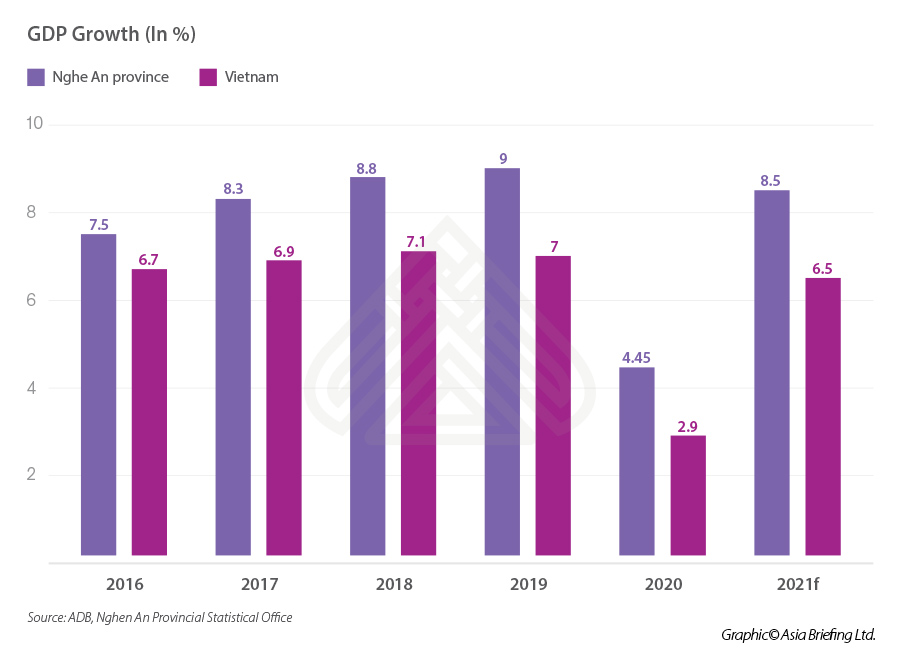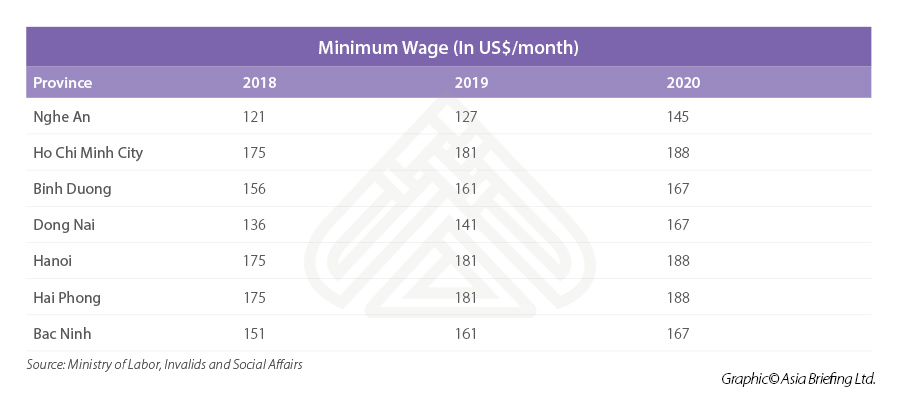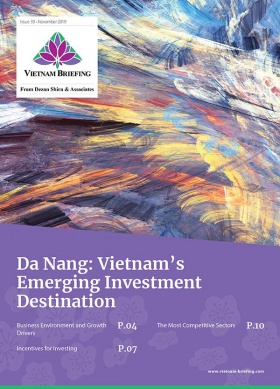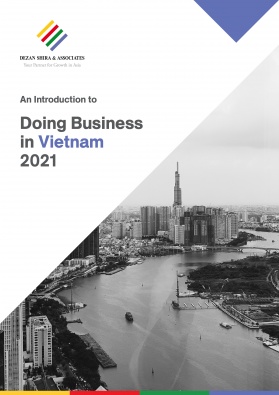Vietnam’s Nghe An Province – Investment Hub of the North Central Coast
- Vietnam’s Nghe An province has been an attractive investment destination for both domestic and international corporations.
- The province possesses competitive key drivers regarding strong exports, positive gross regional domestic products, developing industrial zones, and an adequate source of labor.
- With available government incentives, along with the positive foreign direct investment, Nghe An presents itself as a competitive foreign investment region in the future, not only in Vietnam but also in the wider Southeast Asia region.
Vietnam’s Nghe An province has been at the forefront of attracting investment from domestic and international corporations and has made significant efforts in improving its business environment.
Having overcome the obstacles caused by the COVID-19 pandemic, many import and export corporations in Nghe An have made efforts to seek and expand their markets, taking advantage of various free trade agreements (FTA) to stabilize production and promote exports.
Nghe An economic profile
Exports
In 2020, Nghe An exported to 124 countries and territories around the world, increasing to 15 markets compared to 2019, raising Nghe An’s trade turnover to US$1.12 billion. Of the total exported goods, the processed industrial products accounted for a high proportion of 77.5 percent.
In 2021, Nghe An set a target of achieving a total export revenue of US$1.2 billion, an increase of 7.1 percent compared to 2020. This target would be achieved through the export promotion project for the 2021-2025 period proposed by the province’s Vice Chairman of the Provincial People’s Committee in January 2021.
Increasing GRDP
As per the Vietnamese General Statistics Office (GSO), the total gross regional domestic product (GRDP) of Nghe An was approximately US$3.66 billion in 2020, increasing 4.45 percent year-on-year. With this, Nghe An was among 19 out of 58 provinces with a positive growth rate, ranking second in the North Central region. In addition, its GRDP per capita was US$1,913 in 2020.
Regarding targets of 2021, the Chairman of the Provincial People’s Committee forecasts the economic landscape of Nghe An will remain quite challenging due to the long-lasting impacts of the pandemic. Therefore, the expected GRDP growth target is set to be between 7.5 to 8.5 percent in 2021.
Industries contributing to Nghe An’s economic growth
Nghe An’s agriculture, forestry, and fishery sector managed to maintain an adequate growth of 5.06 percent in 2020.
In 2020, the province’s industrial-construction sectors continued to be robust, acting as the main driver of the region’s economic growth.
Particularly, the proportion of processing and manufacturing industries in Nghe An have been increasing over the years, in which the value of processed and manufactured goods in 2019 accounted for about 70 percent of the total industrial production value of the province.
Further, Nghe An’s industrial production value increased by 18.6 percent in 2020 compared to the figure in 2016, demonstrating strong growth.
Competitive factors
Industrial zones
Nghe An’s Dong Nam Economic Zone aims at becoming a dynamic and sustainable economic development area, emphasizing on tourism, services, urban, industrial, port and logistics center.
The Dong Nam EZ is beneficial because it is an important gateway for Central and Upper Laos as well as Northeast Thailand for connecting Central Vietnam. Hence, the Dong Nam EZ benefits the economic development of not only Vinh City in Nghe An, but it also connects to the growth of Hoang Mai town, Cua Lo town, and other surrounding areas.
WHA Industrial Zone
Located within the Dong Nam Economic Zone (EZ), the WHA Industrial Zone (WHA IZ) is one of the biggest IZs in Nghe An, representing opportunities for manufacturers, distributors, and investors to develop their businesses in the province.
With a total area of 3,200 hectares, the WHA IZ is set to become the largest well-developed industrial zone in North Central Vietnam. The special feature about WHA IZ is its green industrial development model. Accordingly, about 30 percent of the total land area is dedicated to creating green spaces to build an eco-friendly industrial park, contributing to the country’s sustainable development.
Vietnam-Singapore Industrial Park
Besides WHA, also located within the Dong Nam EZ is the Vietnam-Singapore Industrial Park Nghe An (VSIP) industrial park. VSIP attracted 22 projects (10 FDI, 12 domestic) with a registered capital of US$278.3 million in 2020.
With modern infrastructure and a large area for production, VSIP Nghe An focuses mainly on industrial development in key fields such as textile and garment, footwear, food and beverage, machinery, electricity, and telecommunications manufacturing.
VSIP Nghe An does not only benefit the provincial manufacturing industry but also brings thousands of jobs including opportunities for the semi-skilled and unskilled labor force.
Labor landscape
According to GSO, Nghe An’s workforce population was recorded to be 2 million in 2020, accounting for 60 percent of the total population of Nghe An, 30 percent of the workforce in the North Central Coast, and 3.8 percent of the total national workforce.
Unskilled labor
Due to the growth of the manufacturing sector in Nghe An, the province has a demand compound annual growth rate (CAGR) of 2.3 percent for the unskilled labor force since 2015. In 2019, it was reported that 346,698 unskilled labor was employed in the manufacturing sector, an increase of 12.1 percent compared to the figure in 2015.
For industrial parks like WHA and VSIP, it was reported that they encountered less difficulties in recent years in unskilled labor recruitment. However, with the growing demand of labor force in manufacturing rising 2.3 percent annually compared to the supply of 1.3 percent in Nghe An, the province will have to enhance its recruitment with investors likely to face some challenges.
Semi-skilled labor
Semi-skilled labor force is also a competitive factor of Nghe An province, with a total of 159,866 people having received vocational training in 2019, accounting for 8.3 percent of the provincial labor force. What makes this labor sector in Nghe An competitive is that the province was able to supply a sufficient semi-skilled labor force t industrial parks and manufacturing corporations.
Skilled labor
According to GSO, around 12.3 percent of the total labor force in Nghe An is skilled labor, with over 236,000 workers having attended colleges, universities, and higher educational institutions in 2019. However, local demand for skilled labor is still high, with the local labor source failing to satisfy market demand for skills such as technical and practical knowledge.
Skill shortage
As mentioned earlier, a majority of the labor force in Nghe An is involved in agriculture, forestry, fishery, and manufacturing sectors. This demonstrates that Nghe An is still a province with a large supply of unskilled labor.
The young generation in the province lacks the opportunities to learn the skills that are needed in local manufacturing companies, even though many educational and vocational institutions are available. Therefore, there is an urgent need to train workers with professional and technical qualifications, as well as allowing students to engage in more internships and real-life working scenarios.
With rising demand in the industrial and manufacturing sectors, this can be a fundamental problem if not addressed effectively.
Minimum wage
Nghe An’s minimum wage is relatively low compared to other regions such as Ho Chi Minh City, Hanoi, Hai Phong, Bac Ninh, Dong Nai, and Binh Duong.
To be more specific, Nghe An’s minimum wage in 2020 was only US$145 per month, while this figure in other regions ranged from US$167 to US$188 per month.
Government incentives
To encourage further investment, the government has offered various investment and tax subsidies for businesses and investors.
Financial incentives
Regarding corporate income tax (CIT), the government has issued a preferential tax rate of 10 percent for 15 years for the Dong Nam EZ, in which businesses operating in this EZ will receive a CIT exemption for the first four years and a 50 percent reduction in the subsequent nine years.
For industrial parks in areas with difficult socio-economic conditions such as Nghe An, the government offers a tax rate of 17 percent for 10 years, in which businesses are exempt from CIT for the first two years, and will receive a 50 percent reduction in the subsequent four years.
Corporations in the Dong Nam EZ and in other areas such as Tan Ky, Nghia Dan, and Thanh Chuong districts with difficult socio-economic conditions are eligible for an exemption from import tax for products used to create fixed assets such as machinery, equipment, specialized transportation vehicles during production, and construction materials produced in Vietnam.
The government has also issued an exemption from non-agricultural land use tax for businesses in the Dong Nam EZ, and a 50 percent reduction for industrial parks in Tan Ky, Nghia Dan, and Thanh Chuong.
Non-financial incentives
The government also offers businesses subsidies in advertising, promotion, and labor training.
For the first three years of operation, investment enterprises in Nghe An are exempt from the cost of advertising products on provincial mass media such as radio, television, and newspaper. Further, investment enterprises are supported and encouraged to advertise their images on the official portal of Nghe An province, as well as on other websites such as the Department of Planning and Investment, and Nghe An Economic Zone Authority.
The government also offers labor training incentives for investment projects with more than 200 employees. To be eligible, employees need to have a permanent residence in Nghe An, have undertaken training courses at or outside of their manufacturing facilities, and received certificates for their training. The provincial government will then offer an incentive of US$65.22 per employee if they meet the above requirements.
Competitive factors bode well for Nghe An
According to the report on investment promotion and economic development in 2020, Nghe An has approved ten new foreign direct investment (FDI) projects, with a total investment capital of US$164.7 million. These figures account for 13.89 percent of the total number of projects and 49.15 percent of the total investment capital of the province.
With Nghe An possessing key competitive factors such as government incentives and strong exports, the province presents itself as an attractive destination for foreign investors, promising to be a potential investment hub of not only Vietnam but also in the Southeast Asia region in the long term.
About Us
Vietnam Briefing is produced by Dezan Shira & Associates. The firm assists foreign investors throughout Asia from offices across the world, including in Hanoi, Ho Chi Minh City, and Da Nang. Readers may write to vietnam@dezshira.com for more support on doing business in Vietnam.
We also maintain offices or have alliance partners assisting foreign investors in Indonesia, India, Singapore, The Philippines, Malaysia, Thailand, Italy, Germany, and the United States, in addition to practices in Bangladesh and Russia.
- Previous Article Vietnam Unveils New Criteria for Hi-tech Enterprises: Decision 10
- Next Article Q&A: All Eyes on Vietnam – Why and How to Enter the Market








